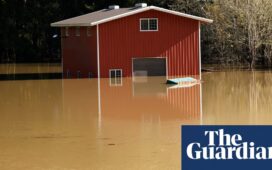Not only do urban landscapes turn up the heat; new research shows that some cities also help to stir up storms. The combination of concrete and air pollution can precipitate storms, make gusts stronger, hail larger, and even steer storms towards cities.
Jiwen Fan, of the US Department of Energy’s Pacific Northwest National Laboratory, modelled thunderstorms over Houston and Kansas City, exploring what difference the buildings and air pollution made to the storm’s development.
She found that the contrast between the warm city air and the cool coastal air enhanced convection over Houston, pulling the storm towards the city and whipping up stronger winds. Meanwhile, the warmth of the city kept the storm going for longer, while pollution particles aided cloud droplet formation.
Over Kansas City, the heat from the built-up area created a more violent storm, and the combined effect of heat and pollution amplified the frequency of large hail by about 20%. Fan, who presented her work last month at the American Geophysical Union’s autumn meeting, hopes that models like these can be used to understand how cities all over the world shape our weather, and ultimately be used to provide more accurate forecasts of severe storms and hazardous weather.

